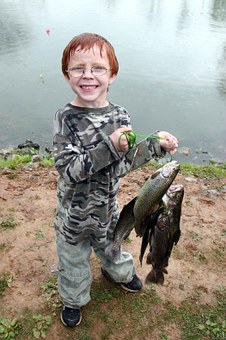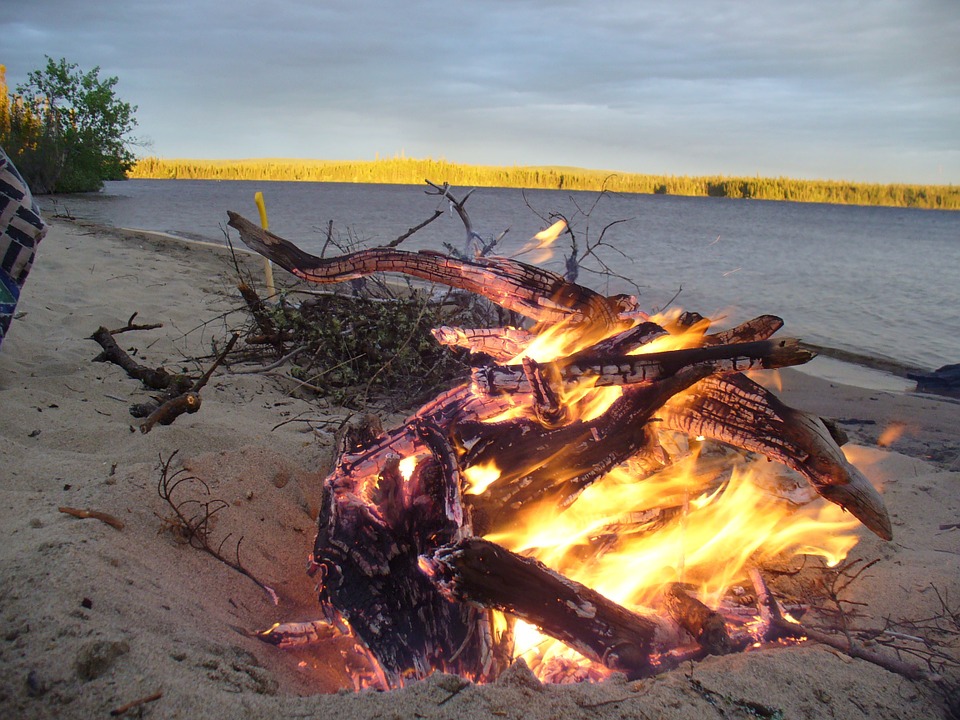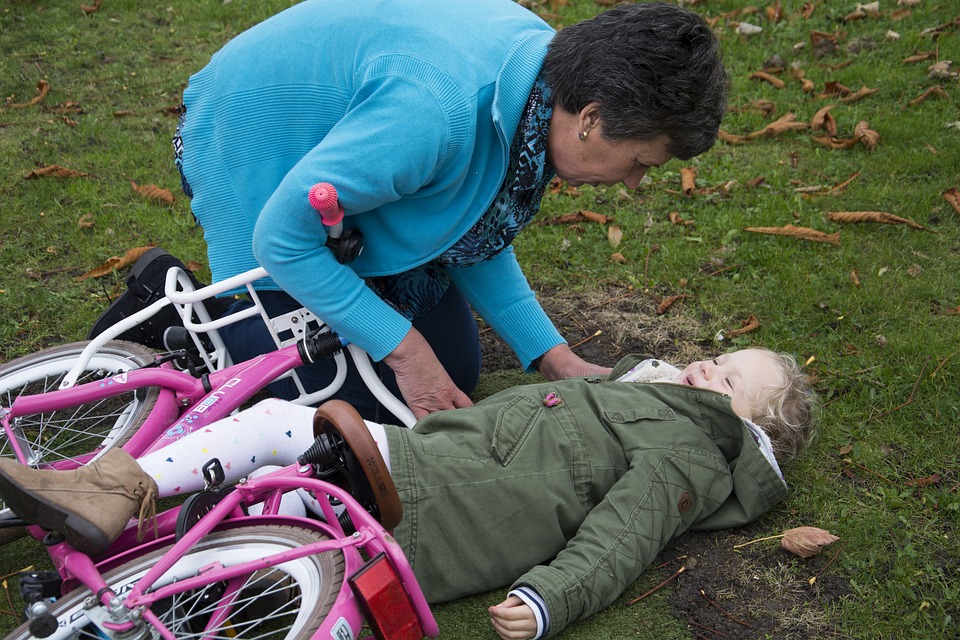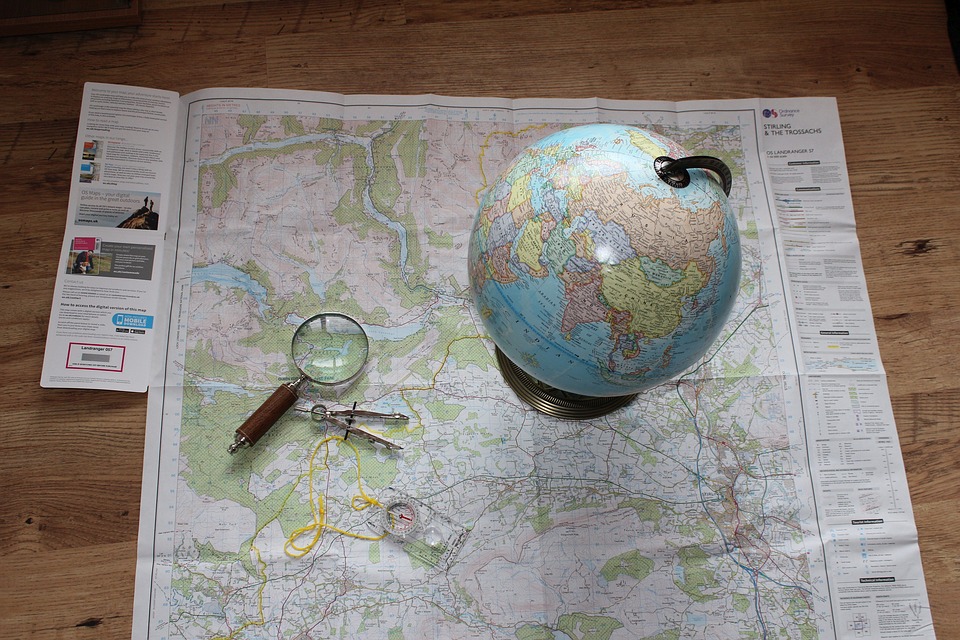Keep the Kids Active
These 11 wilderness survival activities for kids can teach your kids to appreciate Nature and learn essential survival skills while having fun at the same time.
As parents, it was always important for us to raise our children to become independent, and capable adults. We consider ourselves in that category, thanks to our upbringing. Our children’s grandparents were both very involved, and appreciative, of the time they spent in the outdoors.
I grew up fishing, hiking, and camping. This began at a very early age. At this young age, I had no clue what-so-ever, what wilderness survival activities for kids were.
I was raised on the seacoast of the Atlantic Ocean, and behind our house was the Eastern Woodland Forest. I remember running down to the seashore at a very early age. This was nothing out of the ordinary at the time, because all the young children wanted to join the older kids who were there, swimming or fishing. The older ones would be in the skiffs and rowboats doing the same thing.
Winters on the Atlantic coast can get very cold and I can confirm that there were no “polar bear” swims at our wharf when I was growing up. The ice was much too thick, and no one would have dared to jump in it. As soon as the ice thickness had been “tested” by a responsible adult, usually my father, we played hockey and skated on it, until it thawed in the late Spring.
I grew up with no cell phone, no computer, and no calculator, … but I had a secret weapon, and that secret weapon was called “playing”.
As a matter of fact, there was even a period in my childhood, when we did not have a telephone in our house.
How was it possible to survive, and grow old, without a cellphone?
Well, I did, and it seems that all my friends survived this penury as well.
What about the Children?
The reason I survived childhood without a cell phone is that I was too busy playing. Playing is what kids did when I was a kid.
Our “play-time” activities were all seasonal. I forgot to mention, that as soon as we were tired of swimming or fishing, there was a baseball game to finish.
You see, in those days, it was quite common to “pause” our baseball game, to go swimming. Swimming was best enjoyed at “high tide” because we could dive off the wharf, and not have to risk banging our heads on the bottom, something that we were cautioned not to do, by the older kids.
Somehow, and somewhere, in all of this, we were learning to survive.
We didn’t have complicated theories, playdates, safe spaces, and all the safety gear that was required. We just went out to play, because it was fun, and all the other kids were doing it. We wanted to grow up and play with the older kids, because they seemed to be having more fun than us.
We couldn’t wait to go out and play. Our parents encouraged it, regardless of the weather, because there were also older kids to supervise us or use us for performing special duties, such as getting our baseball back from the neighbour’s garden.
This elevated our status and was a sure sign that we were growing up.
What are Kids Doing Today?
As a “boomer”, I’m not here to rain on your parade and tell you about how great we all were. I am here to suggest some activities that parents can use to get their young kids active and motivated and show them how to challenge their older kids.
Kids, in my world, can range from 2 years of age to 12 years of age, after that, they’re teenagers, and that’s a whole new kettle of fish.
So let’s go outside to play!
11 Wilderness Survival Activities for Kids
As mentioned at the outset, teaching kids wilderness survival activities is all about learning how to grow up as independent adults, capable of adapting to the challenges, that they will face later on, in their lives.
Once they leave the nest, they are on their own, so our job as parents is to make this a fun-filled learning experience.
The purpose of this learning exercise is not only in the activity itself. The purpose is to instill the confidence that their young minds need, at this early period in their lives.
Every skill learned is a building block to stand on when moving up the ladder to greater achievement.
1. Learning How to Swim

I’ll start with swimming because everyone knows what swimming is. Very little equipment needed, and swimming can be learned at the lake, at the beach, or in a heated pool at every recreational center, in every city and town where you live in.
No recreation center where you live, do it in the wild, at the beach or at the lake.
A useful and practical wilderness survival skill. Swimming is always fun. A look at any playground water-park on a summer’s day is proof that kids take to water like baby ducks.
special tips
- never swim alone
- always have an adult present
- never take your eyes off of these young swimmers
- for 2-year-olds, swimming can be dragging a stick at the water’s edge
- or sitting on a sand pile
- the older age group can be excellent swimmers
2. Take a Hike

Hiking is just walking, don’t make it too complicated in the beginning. One foot ahead of the other and you’re hiking. As a parent, just dress up the kids for the weather and go. If your kids are small, adjust the pace to their short legs, and slow down.
Don’t bring a ton of snacks to feed them with every 60 seconds. They can survive this hike without food, but do bring some water along. Feeding them snacks every 15 minutes is the reason why they don’t eat their meals.
Hikes are to get them walking, and teaching them to enjoy walking.
special tips
- walk at their pace
- bring water
- when they stop, you stop
- this is not your hike, this hike is for them
- let them determine the pace
- be interested in their findings
3. Let’s go Camping
Camping involves a bit more gear, but do not let this deter you. Pitching a tent in the backyard is an excellent way to get this started. Begin by letting them help pitch the tent, … especially if they are in the older group, and just a little bit too cocky for their britches, and impatient.
There you are. Let’s see if you can pitch this tent on your own, (insert child’s name here).
This will put them on the spot, to use an old expression.
As a parent, you should know that you have to keep a close eye on the instructions. Teach them how to read the instructions.
They do contain pictures. Show and teach the importance of following the proper sequence of steps.
special tips
- the importance of having a smooth “floor” to set your tent on
- you won’t be comfortable on the wet ground
- you won’t sleep well on a bed of rocks
- do not set your tent too close to a creek or river
- be aware of danger above your tent
4. Let’s go Fishing

Fishing is another wilderness survival skill that kids take a liking to very easily. Every kid loves to fish and catching their first fish is an experience that they will never forget.
Contrary to popular belief, fishing requires very little equipment. There are many inexpensive complete fishing packages for kids, at all big box stores.
special tips
- fishing is fun
- let them catch a fish
- if you catch a fish, let them retrieve it
- teach them how to net a fish
- teach them how to unhook a fish
- let them hold the fish
- show them that some fish can be released
5. Learn How to Build a Shelter
Building a shelter is an essential wilderness survival skill for kids to practise. As a parent, you can begin teaching them this skill in your own back, or on one of your hikes along the river, or down a country trail.
If you have a tent, show them how to pitch properly. The importance of not pitching it too close to dangerous conditions.
Bring a tarp or piece of plastic and show them how to construct a shelter with a tarp and some rope. You may be pleasantly surprised at just how creative they can be.
special tips
- how to prepare the ground
- beware of dangers above your tent
- stay away from wet areas
- stay away from creeks and rivers
- how to assess the shelter area
6. Learn How to Build a Fire

This wilderness survival skill is an absolute must, for everyone to learn. Children can be taught how to build a fire at an early age, but this should only be done under adult supervision, and it also depends on the child’s age.
Equally important for them to learn, are the dangers that an uncontrolled fire can cause.
I would begin by emphasizing the dangers that wild, uncontrolled fires present. Where I live, there are times in the summer, when the wildfire danger is extreme. These are times when fires should NEVER be lit. In many of these instances, you should not even be in this area.
If you live in a rural area, you can practise fire-building at home.
fire building tips
- do not build your fire too close to things that will catch on fire
- keep the fire small and under your control
- teaching fire-building to children should be aimed at their age level
- dry materials, tinder, larger pencil-sized sticks, and once this is burning well add larger wood pieces the size of their wrists
- teach them how and what to use for tinder
- teach them how to find pencil-sized, and wrist-sized material
- the fire should only be lit when all your material has been gathered
- at a young age, start their fires with matches, lighters, or sparks (magnesium blocks and Ferro rods)
- young adventurers do not need to learn every fire-starting method known to man, on their first day
7. Water Safety Exercises
Young children love to spend time in or near the water. Water Safety should be taught in a fun way. Make it a playful activity.
Water Safety is an essential Skill. Water Safety “films” are an excellent way to entertain young children. Boating and First Aid are good examples.
special tips
- never swim alone
- always swim with supervision
- PFDs must be worn by Everyone in the watercraft
- PFDs are also known as “lifejackets”
8. Knives and Axes are NOT toys
Proper use of a knife can be introduced when children are sufficiently mature.
This can be determined by the supervising adult.
Cutting tools such as knives, axes, and saws, are very dangerous in young, inexperienced hands.
Axes are a definite NO-NO.
Axes are the most dangerous tool in the survival kit. They cause serious damage when not handled properly.
special tips
- cutting tools are NOT toys
- young children do not need to chop firewood
- their purpose is to gather firewood
- teach them how to find tinder
- teach them the difference between good and bad firewood
- teach them fire safety
- teach them how fire can be dangerous,
- and teach them how fire can be their friend
9. How to Identify Dangerous Plants, Animals, and Situations
This activity can be turned into a mini science project.
Life is fraught with dangers, and this applies to the wilderness as well.
Books on plants and animals are useful for this purpose because of the pictures they contain.
Short films can also be used for this purpose as well.
special tips
- never pick up anything off the ground and put it in your mouth, this is especially important for the very young
- mushrooms can be dangerous for anyone, do let kids eat mushrooms on their own
- at this age, mushrooms are off-limits
- do not feed wild animals
- do not play with wild animals
- do not let them venture off alone
- never take your eyes off of them
10. Basic First Aid

How to avoid injuries, and how to treat minor injuries.
This should not be a First Aid course. Remember they are kids.
Teach them how to recognize danger. Teach them about cuts and scrapes. Teach them about sharp objects.
special tips
- let them apply bandages to each other
- show them how to place an arm in a sling
- show them how to apply splints to a leg
- let them do the work
- show them any bandaging technique that is within their age range to understand
- these skills are different at 2 years and 12 years
- 2-year-olds are happy to drag a piece of clean bandage through a mudhole
- 12-year-olds can perform many of these techniques to adult levels
11. The Map and Compass

How to read a map, and how to read a compass.
What is navigation and why is it important in the wilderness?
This is an opportunity to show a map and compass to youngsters.
Do not airdrop them in a jungle, and expect them to find their way back home.
Introduce them to these tools only, especially the very young.
Let them touch and play with inexpensive models.
special tips
- this is a skill for the older kids
- teach them the cardinal points
- where the sun rises and sets
- make it fun
- stay away from complicated concepts, unless they are older and capable
The Thirst for Knowledge
Children love to learn. They are filled with the curiosity of youth.
Your responsibility as a parent is to teach them how to survive the dangers they will face growing up. Make this a fun activity and you will never be out of enthusiastic students.
Encourage them to ask questions. Show them how to explore the other side of a situation.
Test them often. Ask them questions, see if they are retaining this knowledge. Focus on a few things that THEY like.
Be on the lookout for boredom. Find out why they are not paying attention. Your role is to be the teacher that instills this knowledge into their young minds.
This is not a “what’s the score” game, … this is a “fun activity for kids”. Remember the purpose of this exercise.
Closing Thoughts
Remember that these activities are for kids ages 2 to 12.
The main objective here is to get them interested in wilderness appreciation first.
Teach them how nature can be their friend.
You are the adult. They need you to teach them skills. Be patient. This is not a race. Keep them interested.
If you need any more suggestions, do not hesitate to leave your comments in the space below.


One of the things we have tried to stress to our kids is the ability to be independent and not hooked on technology all the time. Our T.V. is rarely on except for certain occasions and we limit all other screen time. We have tried to instill a love of the outdoors in our kids and have already started to do several of the activities you suggest. Since we really like to hike, I think my next project will be helping them identify dangerous plants, animals, and situations. Wilderness survival skills are an important thing to learn. Thanks for the post!
Being a parent is a lot tougher than being a kid, Steve.
I’m sure you know this as well as I do. Most of these skills and games are a necessary part of growing up.
Hiking is an easy and inexpensive way to get the whole family outdoors. It’s two birds with one stone, playing and exercising. Finding ways to challenge them is also good. Kids are very smart, so it’s challenging for parents to keep up.
Identifying plants and animals is a great way to get them involved. You can always have the book sent to the youngest hiker.
Happy Trails.
Paul
wow. thank you for sharing this wealth of information. They should teach this stuff in school especially water and fire safety. skills like first aid and basic stuff like map reading can come in handy. Thank you for explaining, in layman’s terms, what hiking is because I’ve always wondered! I thought there was something more to that.
Sunny
Life is simple, Sunny, it is us who make it complicated.
Unfortunately, schools don’t teach very much that is practical and useful.
It is therefore, up to us as parents, to “educate” our children early.
If we don’t, who will?
Paul
Hi Paul,
Thanks a lot for the uplifting and educational post. I can tell you I have taken some great insights from your post. We do take our Sunday class children for outing and being a Sunday class teacher your post means a lot to me.
The special tips you shared on each Survival Activity is very helpful. We go for hiking with our Sunday class children and I often push them asking to walk fast after reading your tips I realized my mistake when you said “this is not your hike, this hike is for them” it hit me on my head.
I am going to bookmark your post for future reference and I am going to share this post with other Sunday class teachers in my Church.
Thanks for the kind words.
I made that mistake too, Paul.
I wanted them to walk at my pace, which was impossible.
It’s much easier to slow down to their pace, all it requires is patience, lol.
It’s for them!
That is the magic ingredient.
Paul
Thank you so much for sharing with us such a beautiful article .Your idea is really cool and nice .I have a young child and I think as a parent we should always raise our children to be independent and capable adults.And I consider myself that way to raise my child .And I’ve also gotten support from other members of my family about getting my kids involved in such activities.Even when I was a kid growing up fishing camping and I’m really glad I did it from a very young age.I want to give my kids everything they love.However, I would never know if there were so many verbs in your article.And the idea that childhood doesn’t develop without a cellphone right now is really good for all kids to come out of it.However my favorite is swimming and fishing .Because these two pleasures can be done from one place and it will be very convenient for me as there is a need for swimming fishing nearby.But how interesting these two will be, and how easy it can be to follow any tips, we will certainly follow your article and I will slowly give other activities for my kids to enjoy.
Thanks Shanta, for reading my post.
Kids grow up very fast. It is our duty to raise them as well as we can, so that they can become well prepared teens and later young adults.
We as parents are their most important teachers. Do not leave this very important task to others.
Their young years are the most important. Do not neglect their education.
Paul,
A parent.